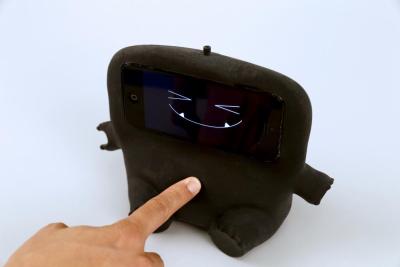CHI Research Makes Waves in the Media

HCII research presented last month at the Association for Computing Machinery’s Conference on Human Factors in Computing Systems (CHI2015) made headlines in everything from The Economist to Gizmodo. Here's a look at some projects and where they landed in the media.
Sensors Know When to Interrupt You in the Car
Interruptions while you're driving can be dangerous — they increase driver workload and reduce performance. Identifying the best time to interrupt a driver is critical for building systems that can mediate these interruptions. A team of HCII researchers collected sensor and human-annotated data from 15 drivers and demonstrated how it could be used to build a machine learning classifier that can determine interruptibility every second with a 94 percent accuracy. Read more about it in The Economist.
Acoustruments
As people find more inventive uses for smartphones, touchscreens sometimes fall short as control surfaces. Researchers at the HCII and Disney Research have developed an inexpensive alternative — a toolbox of physical knobs, sliders and other mechanisms that can be readily added to any device. The idea is to use pluggable plastic tubes and other structures to connect the smartphone's speaker with its microphone. The device can then be controlled by acoustically altering sounds as they pass through this system. Check out the coverage on Mashable, Fast Company, Engadget, TechCrunch, PCWorld and Gizmodo.
Zensors
The promise of "smart" homes, workplaces, schools and other environments has long been championed. But running wires and installing sensors isn't cheap. Plus raw sensor data doesn't lend itself to answering typical human questions like "Do I need to restock my pantry?" Zensors, a new sensing approach that fuses real-time human intelligence from online crowd workers with automatic approaches, provides robust, adaptive and readily deployable intelligent sensors. With Zensors, users can go from question to live sensor feed in less than 60 seconds. Plus it uses affordable materials to make all this happen. Read more about it in Wired, SlashGear, Engadget and Gizmodo.
Technology in the Classroom
More and more schools are giving free tablets to students. But though screen technologies are ubiquitous and certainly appealing for children, it's worth asking whether kids still need real-world experimentation with physical objects to enhance their learning. HCII Ph.D. student Nesra Yannier, working with HCII faculty Ken Koedinger and Scott Hudson, recently demonstrated that the answer to that question is a resounding yes and the blogosphere exploded. Learn more about it at Education Week, Education News, Silicon Angle, the KINECT for Windows blog, The Journal and Vision UX. Carnegie Mellon also ran a feature story on its news page about the findings.

